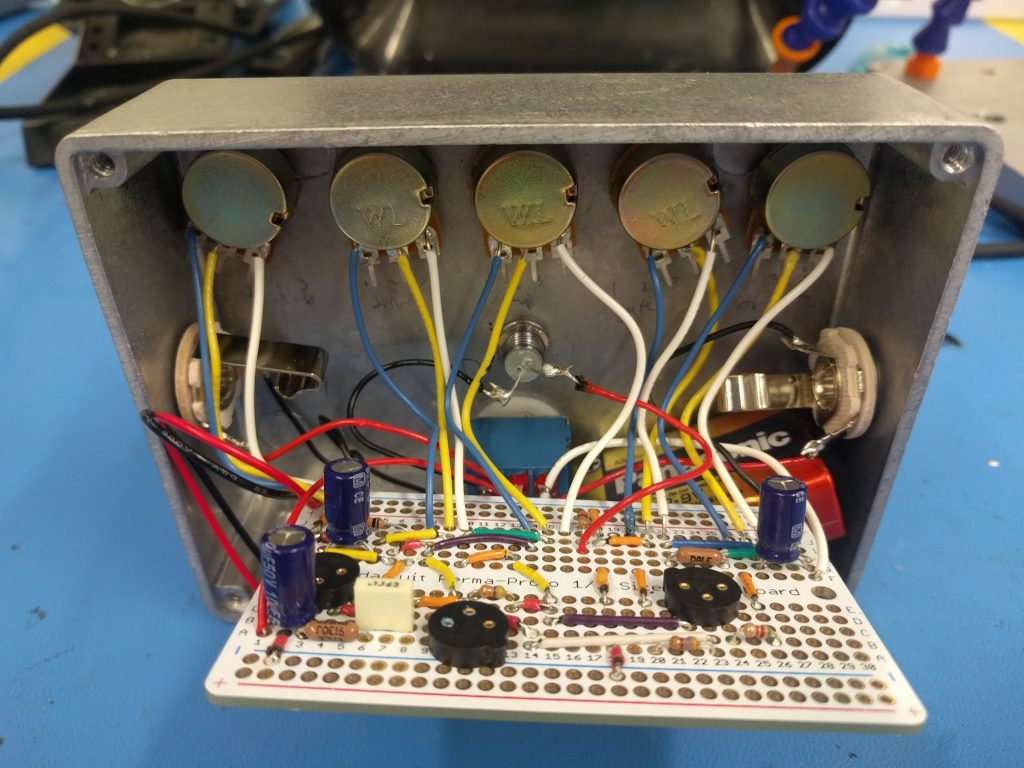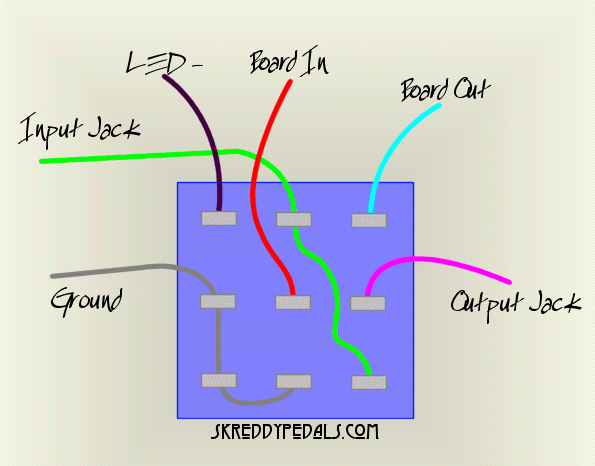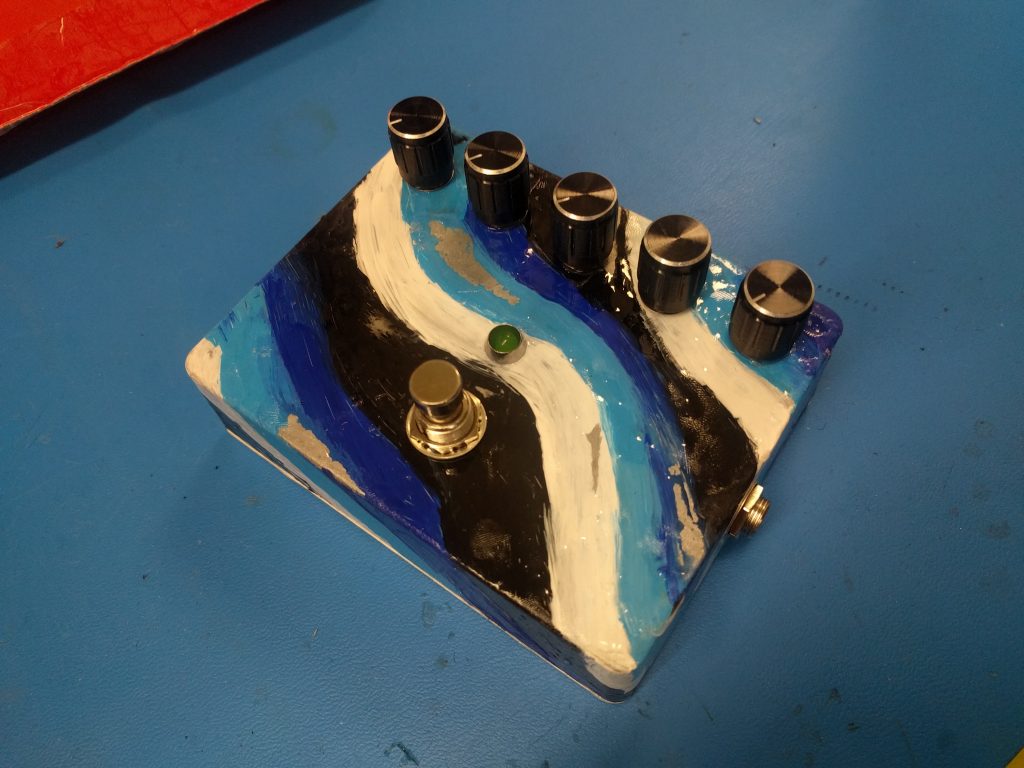I first gathered all the necessary components: the analog controls, input/output jacks, resistors, capacitors, transistors, and of course the enclosure.

I connected most components onto a perfboard base, which basically functions as a lighter-weight breadboard. Since I haven’t really worked with transistors or tried to solder up a circuit this complicated before, it took a bit of time to make sure I connected everything correctly and as neatly as possible.
On the metal enclosure, I drilled holes for the knobs, I/O jacks, LED enclosure, and push button.

With the components put it, just to see how it looked:

After I drilled the holes, I painted a simple design with acrylics and went over it with multiple layers of gloss finish. After that finished, I added the components back in.
Meanwhile, I soldered in the basic circuit. I used transistor holders (the circular parts with three holes) as opposed to directly soldering in the transistors, since soldering can damage transistors if you aren’t quick with it (and I knew from the get-go that I wouldn’t be that quick!).

Once the circuit was fully connected, it was a (relatively) simple matter of screwing in all the components into the enclosure and soldering them together. Here are views with both the top and bottom of the perfboard exposed:


I had to learn the orientations of transistors, make sure the LED and electrolytic capacitors were in the correct directions, and figure out how to connect the DPDT switch. I ended up following this orientation:

After all that building, my finished pedal:


this place has a wealth of components that may be relevant: http://www.stewmac.com/Pickups_and_Electronics/Pedal_Kits_and_Parts/Pedal_Enclosure.html
Seems like you’ve laid out your ‘to-dos’ well, and are on a great trajectory.
I’d love to see a rough sketch/idea of the design that you plan to put on the outer casing, and/or a video demo of your circuit in action once it’s completed!
This looks really cool! How are you planning to test the circuit as you move through the building process? Can you make sure it’s working right as you go along and put it together?